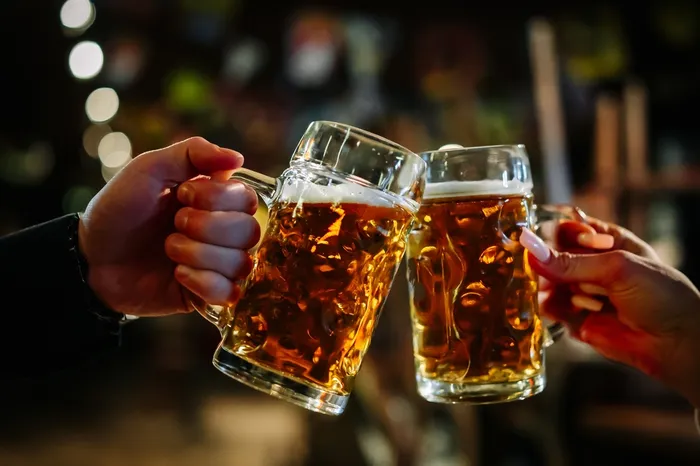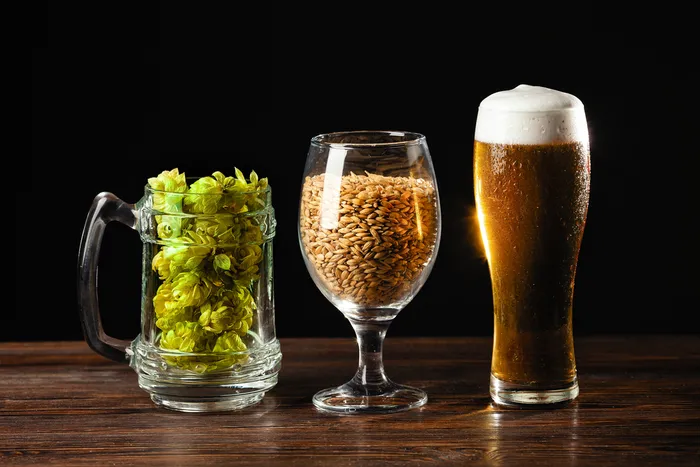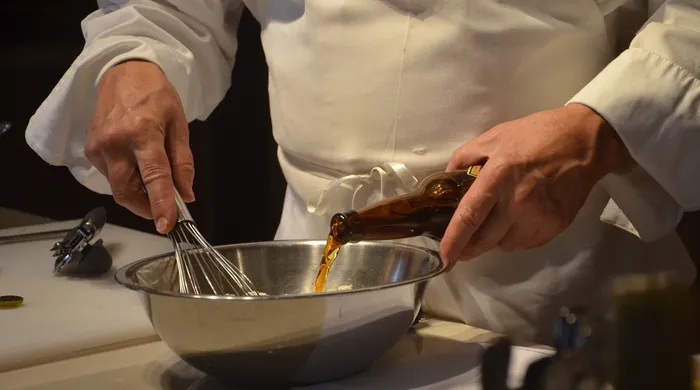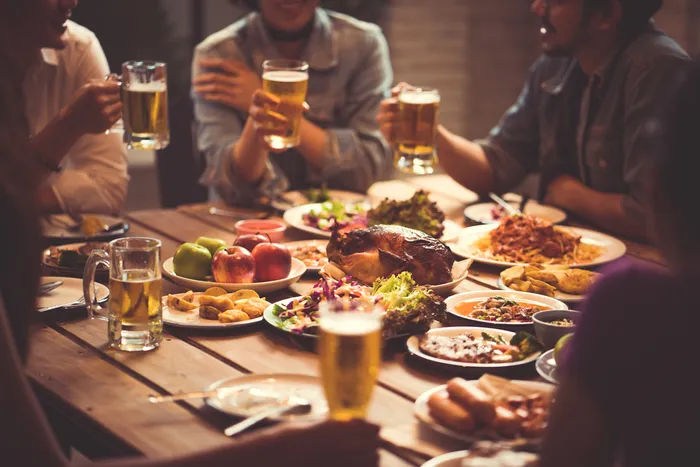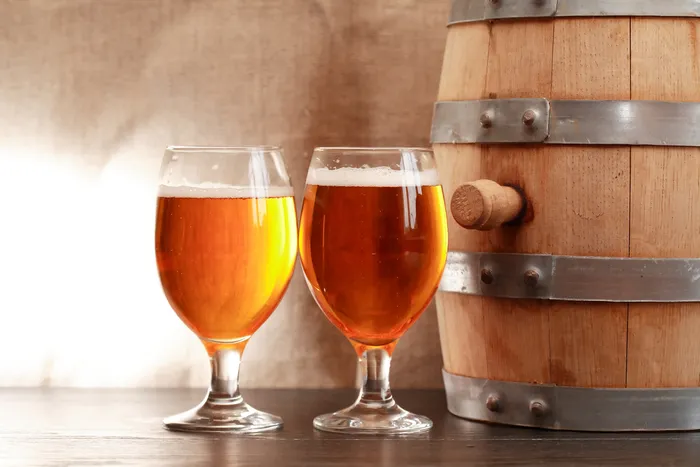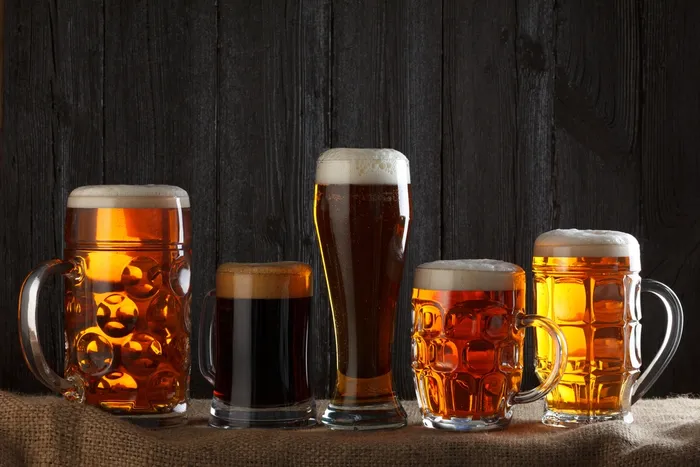There are no results that match your search.
Beer • 5 min • 18.11.2023
Types of Beer: A Comprehensive Guide to Different Flavours & Styles
A complete list of the most popular types of beer and examples

From its ancient origins to modern innovations, beer has become an integral part of our cultural fabric, quenching our thirst and leaving a rich legacy.
As there are over 100 types made worldwide, we can't possibly delve into each one. But whether you're a seasoned enthusiast or a newcomer, our guide will give you a comprehensive overview of the most popular types of beer and their characteristics.

Ales: Robust And Intricate Character

- Region of Origin
Varied
- Colour
From pale to dark
- Yeast
Saccharomyces cerevisiae
- Fermentation
Warm and quick
Ales are renowned for their bready roundness, featuring fruity esters, warm maltiness, and a delightful blend of hops. The diverse range of ingredients contributes to their rich and intricate taste.
Here are some examples:
- Pale Ales
Known for their hoppy bitterness and refreshing citrus notes, pale ales are a go-to choice for a balance of malt sweetness and hoppy aroma.
- Stouts
Dark, robust, and rich stouts offer roasted malt flavours. They're the perfect companions for hearty meals.
- Porters
Similar to stouts but lighter in body, porters offer a smooth blend of malt, caramel, and chocolate.
- Wheat Beers
Refreshing with a crisp, slightly cloudy appearance, wheat beers feature fruity and spicy flavours.
- Barley Wines
These strong ales have high alcohol content and complex, sweet, and fruity flavours.
- Traditional Cask Beers
Cask-conditioned ales with softer carbonation and fuller taste.
Lagers: Crisp And Light Flavours

- Region of Origin
Central Europe
- Colour
Pale
- Yeast
Saccharomyces pastorianus
- Fermentation
Cold and slow
Lagers offer crisp flavours due to the yeast's influence during fermentation. The result is a smoother and more refreshing taste compared to ales.
Some examples are:
- Pilsners
Crisp, golden, and highly carbonated, pilsners offer a refreshing, slightly bitter taste.
- Helles
A pale lager with a malt-forward profile, Helles has a mild flavour.
- Bocks
Rich and malty, bocks vary from light to dark, offering a range of caramel and toasty notes.
- Dunkels
Dark and full-bodied dunkels feature chocolate, caramel, and dark fruit flavours.
Sour Beers: Wild Fermented

- Region of Origin
Belgium
- Colour
From pale to dark
- Yeast
Uncultivated wild yeast strains
- Fermentation
Spontaneous
The primary characteristic of sour beers is their tangy and sour taste, ranging from mildly tart to intensely puckering. This sourness is often reminiscent of fruits like lemons, cherries, or green apples.
Here are some examples:
- Berliner Weiss
These pale, cloudy beers have a tart and refreshing character. They're often enjoyed with flavoured syrups.
- Lambics
Spontaneously fermented with wild yeasts and aged in wooden barrels, lambics offer a complex sour flavour.
- Krieks (Cherry Sour Beers)
Krieks are infused with cherries that give them a sour undertone.
Cultural Influences On Types Of Beer
Regional and cultural influences affected the diversity of beer worldwide. These factors involve ingredients, flavour profiles, and brewing techniques that have evolved in specific corners of the globe.
German Beer Culture German brewers have upheld centuries-old brewing techniques, such as cold fermentation, practised during March, leading to exceptionally crisp lagers. This technique is especially notable in types of German beer like Märzen, often enjoyed during Oktoberfest.
Traditional German values of purity and adherence to the four core ingredients — malt, hops, yeast, and water—have influenced the global craft beer movement.
Trappist Monastic Tradition
Trappist monastic orders, like the St. Bernardus, produce distinct beer styles with profits benefiting their communities.
Trappist beers include single, doppel, triple, and quad styles. Each type has unique flavours and strengths, reflecting the monastic way of life.
Bubbling Up Under the Surface: The Future of Beer
If you're new to beer, start by supporting your local craft brewery, where you can explore local flavours, techniques, and the contagious excitement of each brew. Also, watch for the green revolution in brewing—a beer that's delicious and eco-friendly.
There's always something new, surprising, and worth raising a glass to. You can check out Paneco to try some of the most popular types of beer and be ready for that special moment.










